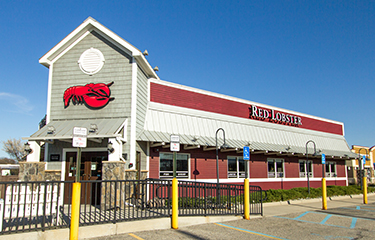Red Lobster profits suffering, but turnaround initiatives in place

Red Lobster sales and profits continue to struggle, but Thai Union executives said they are confident in the Orlando, Florida, U.S.A.-based restaurant chain’s strategy for a turnaround.
Thai Union realized record sales and net profits in the third quarter, but the company suffered losses from Red Lobster. Thai Union reported losses of THB 456 million (USD 12.4 million, EUR 12.37 million) attributed to Red Lobster – much higher than the THB 171 million (USD 4.6 million, EUR 4.6 million) loss it took in the same period of 2021.
“The COVID-19 pandemic was an equal opportunity disruptor to all businesses, though it hit the restaurant industry especially hard. Overnight, our restaurants worldwide had to temporarily close their doors. And, when we were able to re-open, in many cases it was for to go only or at significantly reduced capacity for a while,” a Red Lobster spokesperson told SeafoodSource.
Red Lobster executives are “grateful that the closures were temporary and that we have re-opened the doors and returned to normal dine-in and to go operations in almost all our restaurants,” the spokesperson said.
For the past two years, the U.S.'s largest seafood restaurant chain has focused on a turnaround inside the country and beyond.
The global restaurant operator opened its first ever franchise restaurant in Bangkok, Thailand, this year, and has plans to add four additional franchise branches in Thailand over the next five years, Thai Union said during its third quarter analyst meeting.
Acknowledging the impacts of inflation and “soft” guest count in the United States, Thai Union executives also have several operational and marketing strategies in place to boost Red Lobster’s U.S. sales in the next 12 months.
When Thai Union Group CEO Thiraphong Chansiri came to the U.S. in July to speak at Red Lobster’s annual operations leadership conference, he “took the opportunity to visit a number of Red Lobster restaurants,” the spokesperson told SeafoodSource.
To drive guest count and sales traffic, the restaurant chain is focusing on value deals such as Summerfest and Ultimate Endless Shrimp. It also recently rolled out 10 percent off USD 40 (EUR 38.86) coupons to drive traffic during the back-to-school season.
Red Lobster began raising prices in August to cover cost inflation, “uplifting price per pax (check) to be in line with industry,” Thai Union said. It also improved its menu mix to focus on more profitable items and continues to push beverages. The company plans a new senior/operations leadership team to make the organization leaner and is exploring a new “lower cost" labor model, Thai Union told investors.
Thai Union representatives did not respond to SeafoodSource’s request for comments on the leadership team changes and its new labor model.
The restaurant chain has still not named a new chief executive officer after Kelli Valade resigned earlier this year, after just eight months at the helm. Paul Kenny, a member of Red Lobster's Board, is serving as the liaison between Red Lobster's leadership and the Board during the time of transition, the Red Lobster spokesperson said.
However, Kenny has not been named CEO, as was implied in other media outlets, according to the spokesperson.
David Schmidt, who was named chief financial officer at Red Lobster in March 2022, left the company in September to become the president of Keke’s Breakfast Café, a restaurant chain purchased by Denny’s earlier this year, the Orlando Sentinel reported
“This sometimes is the problem with being in a company that is undergoing management change, is that it has an effect up and down the ranks in terms of difficulty in recruiting people,” Pacific Management Consulting Group Founding Principal John Gordon told the Orlando Sentinel. “Anytime there’s a change at the CEO level, then that causes change all throughout the organization.”
Red Lobster also faces headwinds in the U.S. restaurant market. The chain’s menu prices and economic challenges facing their customers base are “going to be a problem” in the near future, FoodserviceResults CEO Darren Tristano told SeafoodSource in August.
“[It’s] not an easy concept to get your arms around. It’s the biggest seafood concept and is still focused on lower- to middle-income [customers], which I think is great, but it’s a tough market,” Tristano said. “I think it needs an investment and a little more rejuvenation.”
It is “very likely” that the restaurant chain needs to operate smaller restaurants, so it can build a better take-out model, such as a “Chilis to Go” concept, according to Tristano. Alternatively, it could shift to a drive-through concept, modeling itself after Long John Silver’s, which has performed very well during the COVID-19 pandemic, Tristano said.
Photo courtesy of ehrlif/Shutterstock






Share